College campus security systems are unlike any other security system. In some ways, they look like the law enforcement profile of a small (or not so small) city, complete with their own police station, security dispatchers, and police force. In other ways, they look like the security systems you’d find in any other large facility, with access control systems, cameras, etc.
There might even be large security systems that are wholly separate from the main campus security system, found in all the on-campus shops and restaurants. Let’s go through all the components of an integrated security solution for your university or college campus.
Solink has video security solutions tailored to the campus setting. To see how Solink can enhance the security of your campus, sign up for a demo today.

The Clery Act Appendix for FSA Handbook
It’s hard to discuss college security systems in the USA without mentioning the Clery Act Appendix for FSA Handbook. This document is intended to be a plain-text explainer of the regulatory requirements provided in related legislation.
Here are some of the requirements mentioned in the Appendix:
- Collect, classify, and count crime reports and statistics.
- Issue campus alerts and warning notices.
- Publish an Annual Security Report (due on October 1st).
- Disclose missing student notification procedures, when applicable.
- Submit crime and fire statistics to the Department, when applicable.
- Disclose procedures for institutional disciplinary actions.
- Provide educational programs and campaigns.
- Keep a daily crime log, when applicable.
- Disclose fire safety information, when applicable.
With this in mind, let’s take a look at some resources available to campuses for setting up, updating, and managing their security systems.
Resources
There are many websites available to help campuses improve their security. Here are some of the available US government resources:
- Campus Crime Statistics Online: This allows parents, students, and prospective students to look into campus crime statistics for any university or college.
- Suggested Resources: This is a list of websites for universities and colleges to access when considering how to improve their campus security system with campus sexual assault training and prevention resources.
- Various security magazines: Keep up to date on the latest security news and trends by subscribing to industry-specific magazines, podcasts, and newsletters.
U.S. Department of Justice COPS (Community Oriented Policing Services) Program: The COPS grant program makes funds available for higher education institutions to improve their campus security system in many ways.
Campus security system components
Let’s take a look at everything that should be included in your campus security system. First, we discuss the backbone of campus security: the security and police officers who protect your staff, faculty, students, and property. Then, we go through all the campus security tools that make their job possible.
Security and/or police officers
Campuses are often designed and operated as small cities. No city the size of a university or college would be able to operate without a police department. That’s true here as well. Campuses often lean into the community policing system and as such usually have their own police department separate from the larger city.
Security cameras for campuses
Security cameras are the primary security infrastructure across campuses. Most universities and colleges need hundreds or thousands of cameras to properly cover all of their buildings, parking lots, and property.
Here are some of the camera types applicable to campus security. We have an entire article dedicated to security cameras for those looking for more in-depth information.
Bullet cameras
Bullet cameras are some of the most common campus security cameras on the market. They are small and get their name from their shape.
Their small size and easy installation make them particularly versatile. You can find them indoors and outdoors, and they are usually less noticeable than larger security cameras. However, their shape makes them less robust to vandalism than dome cameras (see below).
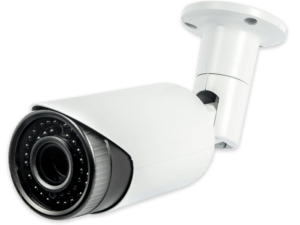
Dome cameras
Dome cameras are campus security cameras covered with a dome. This obscures the direction they are facing, which can make employees and customers less sure what is or is not in the camera’s field of view. In addition, their shape and the dome protection make them more resistant to vandalism.
However, as with many of the other cameras on this list, it has a fixed viewing angle that cannot be changed remotely.
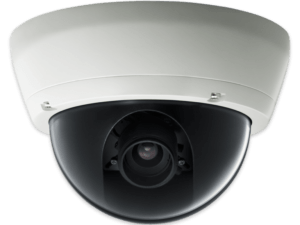
360 degree cameras (fisheye cameras)
Fisheye cameras give the user a complete 360° by 180° view. 360 degree cameras get their nickname of fisheye cameras due to the distorted image shown.
However, using modern gaming technology, Solink stretches out this view to give you an immersive look at what is happening at your site. Here’s the 360 camera at work with Solink:
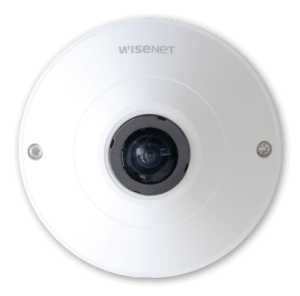
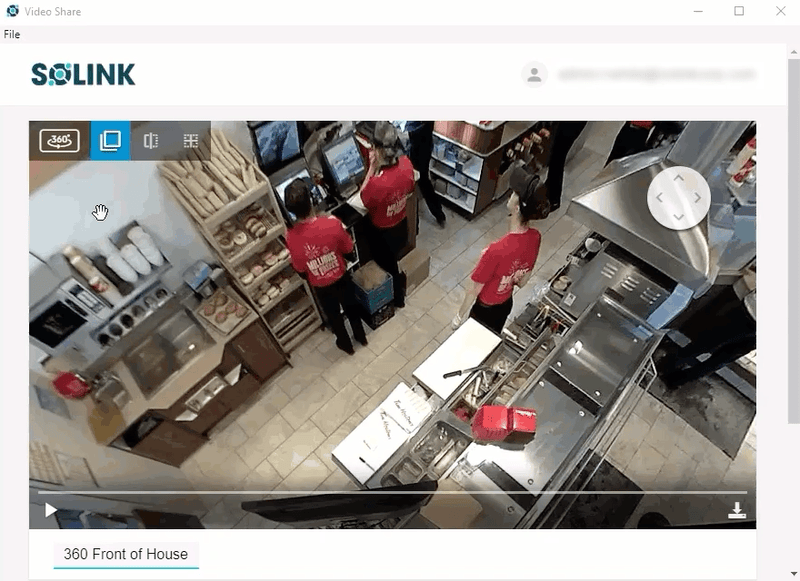
We’ve found that a single 360 degree security camera can replace four to six traditional security cameras in wide open areas.
Video analytics for universities and colleges
Campuses need a video analytics platform that is tailored to their particular needs. Solink offers a video analytics solution with all of the requirements of educational institutions.
Here are some of the features Solink offers to universities and colleges:
- Encrypted remote video monitoring by multiple users
- First responder real-time video access
- Flexible video storage
- Simple and low-cost deployment
- Camera agnostic with no servers to maintain
Encrypted remote video monitoring by multiple users
Solink gives you access to your camera feeds from anywhere in the world using cloud video security technology. The data is transferred securely to ensure the privacy of your staff and students. Furthermore, you can set up multiple accounts, each with their own level of access. That way, authorized users can view the videos they need to.
Remote video monitoring is a key feature for campus security so they can see the entire campus at once.

Flexible video storage
Solink can change the level of video storage capacity to fit your needs. Whether your school board or state/province mandates 30 or 90 days of video storage, we can accommodate those requirements.
If you aren’t sure about video storage solutions, take a look at our DVR vs. NVR article.
First responder real-time video access
In the event of a school shooting, fire, or other major incident, school administrators can directly share the Solink video feed with emergency responders on their laptop or mobile device. This helps responders to react appropriately. As the initial response is on its way, the emergency dispatcher and proceed with the correct support team so send to your campus.
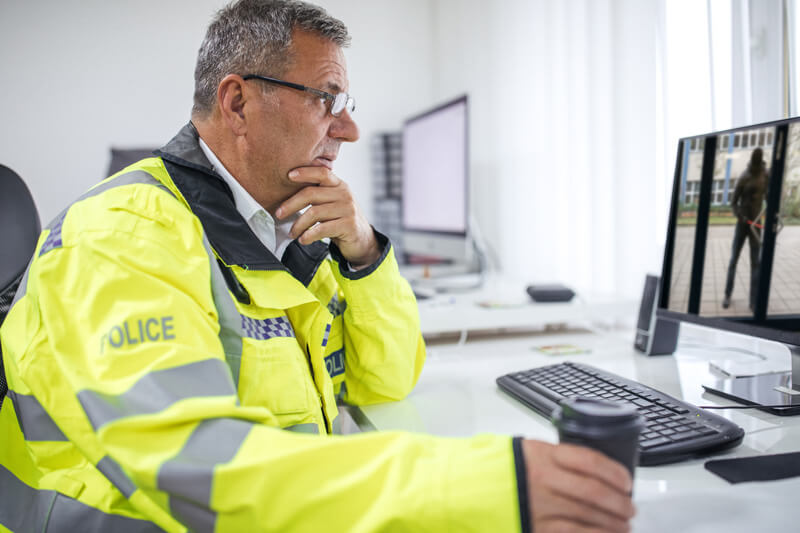
You can go one step further and set up Solink’s Video Alarms Service. This will give you real-time alerts when motion is detected where there shouldn’t be. You can then review the live feed and decide whether an emergency response is necessary.
Simple and low-cost deployment
Solink is simple to set up. We can arrange for installation or work with your preferred installer. The lower upfront cost with no long-term contract to sign makes it easy to deploy Solink in educational settings.
Camera agnostic with no servers to maintain
Solink can work with almost every video security camera on the market. If you don’t have cameras installed yet or you are looking to upgrade to the newest tech, we can source cameras or work with the cameras you have. Here’s a list of the camera models compatible with the Solink platform.
If you are ready to see how Solink can help keep your education environment safe and secure, sign up for a demo today.
Access control
Campuses have many buildings, most of which are open to the public for at least some hours everyday. Access control allows security officials to limit access to buildings and/or specific areas of buildings to authorized personnel, either all the time or after hours depending on the building.
Comprehensive health, safety, fire, and emergency response services
Modern campus security systems take a holistic approach to the health and safety of students, faculty, staff, and visitors. This includes health, safety, fire, and emergency response services.
As a further reminder, inclement weather should also be considered when planning your emergency alert and response system. If your location is susceptible to tornadoes, hurricanes, or earthquakes, then be sure to add these weather warnings to your emergency services.
Emergency shelter
Your campus location will dictate the type of emergency shelters you require. If you have emergency shelters, it is important that they are clearly marked on maps and emergency alerts direct people to the nearest shelter when they are needed.
Emergency alert text messages
Using social media, notifications on the campus website, CCTV broadcasts, and text messages can all operate as emergency alerts. Consider the diversity of a campus population when designing your alert system. It is better for some people to receive the alert through multiple channels than for others to not see the warnings at all.

How should you present your campus security information?
Now that we have discussed what should go into your campus security plan, it is important to discuss how you share that information with everyone on campus.
Students use their university or college website in many ways, from selecting courses and accessing their grades to finding information on their campus including upcoming events and the resources available to them.
The home of the campus security system online is an important way to convey information to students regarding their health and safety. In many cases, this will be the first time students have had to manage issues regarding their health and safety without parental help. That makes your campus security website even more important.
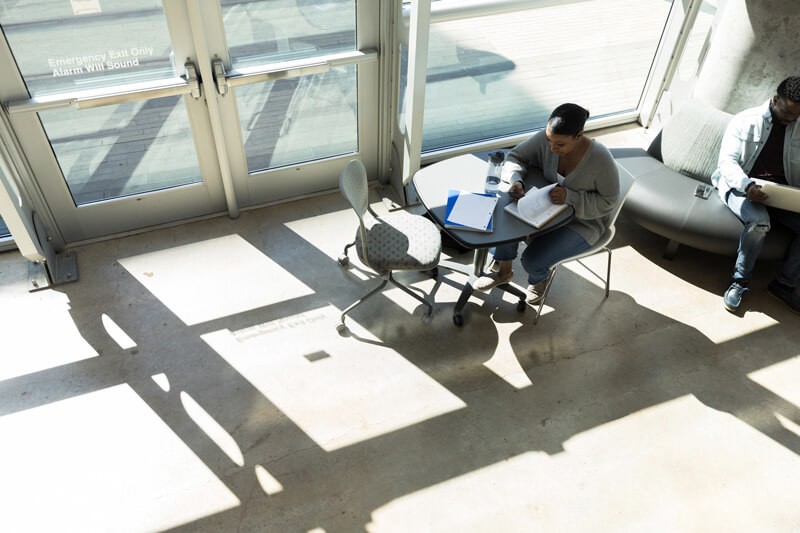
So, what goes on a campus security website?
We checked the top ranking campus security websites from every US state (plus Washington D.C.) to see what most campus security offices include.
Here are the websites we compiled:

Campus security system website best practices
The websites listed above represent a diverse group of universities and colleges. There are public and private, big and small, and two- and four-year colleges and universities represented. There are even a couple of medical schools topping the local state search rankings.
After going through the list, we found that the best ranking websites include some or all of the following:
- Friendly greetings
- Campus security mission
- Information on how to report a crime on campus
- Anonymous tip line
- Parking rules, passes, and enforcement information
- General health and safety information
- Major events response plans
- Contact information
- Weather and emergency alerts
- Social media
- Map
- FAQs
Let’s take a look at each of these separately.
Friendly greetings (with photos)
Many of the top websites include pictures of all members of the campus police, or the leaders for the larger campus police departments. The photos, names, and, often, something personal included for each police officer portray a “community policing” feel. The goal is to make the students see the individual people helping to keep them safe instead of a police force.
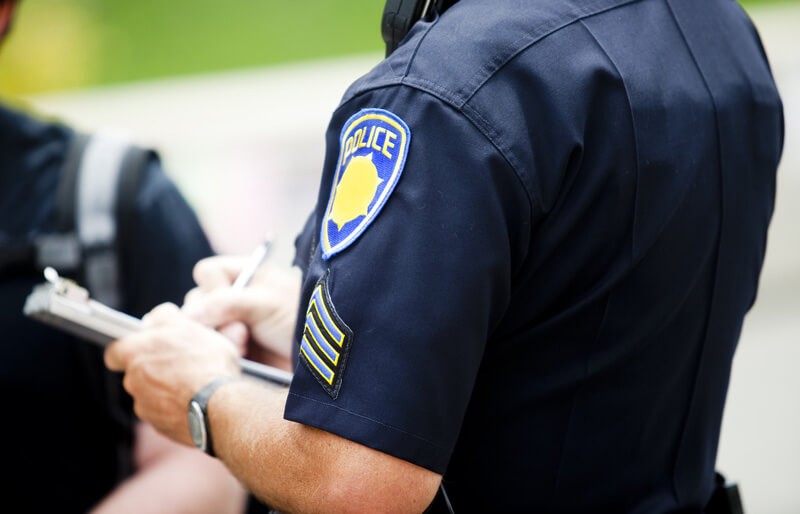
Next, there should be contact information for the campus security office as well as individual police officers (phone numbers, email addresses, location of the building, etc.)
Campus security mission
In addition to photos and introductions, the campus security system often adds their mission. That mission is usually something on the lines of “we strive to keep students, faculty, staff, and visitors safe.”
The mission statement might also include something about how campus security is more than the campus police department. It usually states the comprehensive view of campus security, including police, fire, and emergency medical services, as well as, sometimes, the public and medical healthcare systems.
Information on how to report a crime on campus
There is almost always information on how to report a crime. This will include emergency (9-1-1) and non-emergency phone numbers (the campus police station’s phone number).
Some campuses might also have designated staff members to whom students can report a crime. For example, the dean of students and/or director of counseling might be available for these services if students do not feel comfortable discussing the crime directly with the police.
Anonymous tip line
Many campuses offer anonymous tip lines for reporting a crime. Students, especially friends or fellow members of a Greek society, might not feel comfortable coming forward about criminal activity. Offering anonymous ways of handing off such information may help decrease campus crime levels.
Parking rules, passes, and enforcement information
Campus security systems often have a lot of responsibilities beyond policing and emergency response. One of these areas is monitoring the parking system, including selling parking passes and giving parking tickets to those who violate the rules.
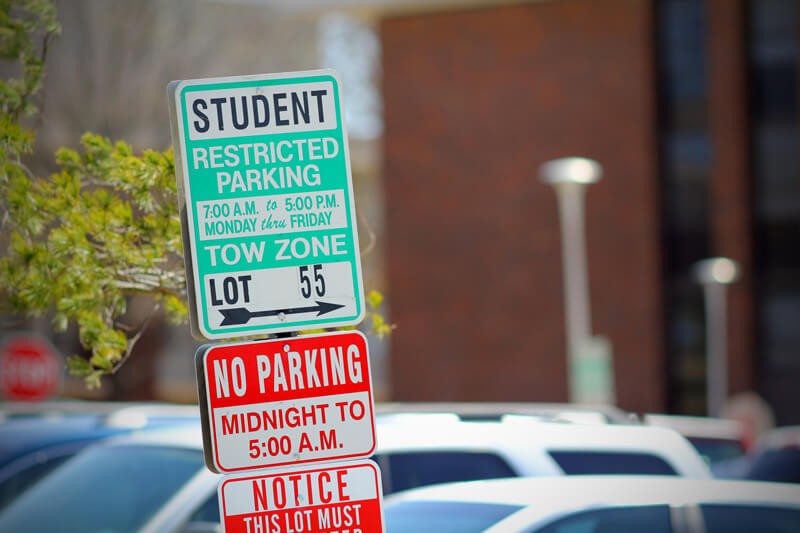
General health and safety information
Part of a successful campus security system is an integrated approach to health and safety. If your campus has public health, emergency medicine, counseling, etc. services available, it might be worth adding them to your campus security website.
Major event response plans
Major events come in many forms, from weather emergencies to security incidents such as active shooters. They can last from a few minutes to be ongoing for days or weeks. During these events, students, faculty, and staff will need extra help and guidance to remain safe.
Having a repository of campus major event response plans that cover all of these possibilities will allow those on campus to help each other and themselves.
Weather and emergency alerts
Weather can represent a major threat to the safety of people on campus. Integrating the weather alerts with other emergency security limits can add credibility to your weather warnings. Campuses across North America deal with many different types of extreme weather, and everyone on campus needs to be quickly notified if they should seek shelter or remain inside.
Social media
If your campus security office utilizes social media as part of their outreach or notification system, be sure to list these accounts. If you do utilize social media, you should make sure that all accounts are monitored as some people may try to contact the campus police department via social media.

Map
Most campus security system websites have a campus map available. In addition to the station, health services and other locations on campus related to essential health and safety are usually clearly marked.
FAQs
FAQs are great ways to convey information. They mimic the normal question-and-answer style of conversation. Often, health and safety information is confusing. This is probably why many of the top ranking campus security websites offer further information in an easy-to-digest FAQ format.
Cloud video security improves campus safety
Campus security systems are there to protect students, faculty, staff, and guests. They are there to keep everyone safe and secure from daily incidents as well as from major events.
Solink helps keep the people and property on your college or university safe.
To see how Solink can protect your campus, sign up for a demo today.
